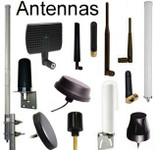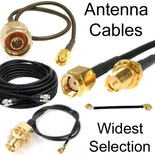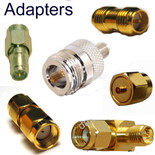Antennas, Antenna Cables, Wireless Products: Technical Articles
How to Measure and Improve RSSI for Antennas and IoT Devices
Table of Contents
FAQs
What is RSSI and why is it important for IoT devices?
RSSI (Received Signal Strength Indicator) measures the power level of a received RF signal. It helps determine the quality of wireless communication. Strong RSSI values ensure better connectivity, fewer dropped packets, and more reliable performance for IoT devices.
How can I measure RSSI on IoT devices?
Most IoT modules (Wi-Fi, LoRaWAN, Zigbee, Bluetooth) have built-in RSSI reporting. For example, LoRaWAN modules use AT+RSSI?, Wi-Fi on Linux uses iwconfig, and Bluetooth LE libraries (like PyBluez) provide read_rssi() functions.
Are there software tools available to measure RSSI?
Yes. Tools such as Wireshark, NetSpot, and Acrylic Wi-Fi Analyzer can measure Wi-Fi RSSI, while apps like nRF Connect report Bluetooth RSSI. For LoRaWAN, platforms like The Things Network (TTN) display RSSI values for received packets.
What hardware tools can be used for RSSI measurement?
Hardware options include spectrum analyzers for frequency-wide analysis and RF signal meters, which provide direct RSSI readings for antennas and devices.
How can antenna selection and positioning improve RSSI?
- Use high-gain directional antennas for long-distance point-to-point links.
- Use omnidirectional antennas for broad area coverage.
- Raise antennas above obstacles and align them properly to maximize line-of-sight performance.
What software-based methods improve RSSI?
- Increase transmission power (e.g., adjust TX power on Wi-Fi or LoRaWAN).
- Optimize network protocols by tuning spreading factors, bandwidth, or enabling dynamic routing in mesh networks.
- Use automatic channel selection to avoid interference.
What hardware enhancements can boost RSSI?
Options include using RF amplifiers or boosters, installing antenna arrays, and ensuring high-quality cables and connectors to reduce signal loss.
How can RSSI be monitored and optimized over time?
Continuous monitoring is key. IoT devices can log RSSI values to a local or cloud database (e.g., InfluxDB, AWS, Firebase). Dashboards like Grafana or Node-RED help visualize trends. Automated feedback systems can adjust transmission power, antenna orientation, or channel selection in real-time to maintain strong signals.







